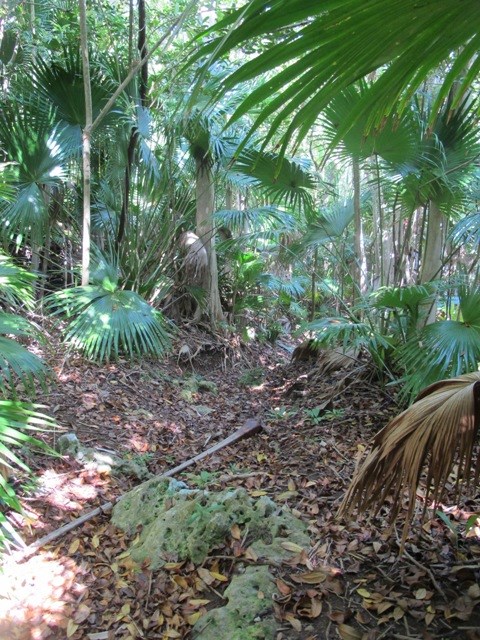Welcome to Warwick Ridge Nature Reserve!

Another beautiful stretch of the Bermuda Railway Trail guides you to this small, unassuming 1 acre of woodland nature reserve. As you stroll along this quiet corridor of natural beauty be sure to keep your eyes and ears open for Bermuda's most common species of wildlife.
Without a doubt you will hear the incessant call of the Kiskadee (Pitangus sulphuratus). This distinctively coloured bird, with a bright yellow belly, was introduced from Trinidad in 1957 in an attempt to control the Anolis lizards. You will see many of these lizards as you explore, making it obvious that this biological control was not very successful!
The Jamaican Anole (Anolis grahami), the most frequently seen lizard in Bermuda, was introduced in 1905 to control fruit flies that were damaging local crops. However, it was later discovered that the lizards prey heavily on beneficial bugs, such as Lady Bugs (Coccinellids), which had been introduced in 1947 to control the scale bugs that had nearly eliminated the Bermuda Cedar (Juniperus bermudiana). Therefore, Kiskadees were introduced to control the lizards.
This biological control failed because once in Bermuda the Kiskadees ate few lizards. Instead they preferred the eggs and chicks of smaller birds, such as our endemic White-eyed Vireo (Vireo griseus bermudianus) and our native Bluebird (Sialia sialis). They also eat fruits and berries, making them responsible for spreading the seeds of invasive plants. Kiskadees also eat small fish, including freshwater fish introduced to control mosquitoes. They have been seen to eat a variety of insects and it is thought that the Kiskadee contributed to the probable extinction of the once very common Bermuda Cicada (Tibicen bermudian).
It is believed that Bermuda's cicadas were dependent on Bermuda Cedar trees for their survival, and when the cedar forests died back in the 1940's due to the scale bugs, the ciadas began to quickly disappear. Those few that survived the cedar blight were eaten by the Kiskadee and it is fear that Bermuda's cicada is extinct. The last one heard buzzing was on Nonsuch Island back in the early 1990's.
You can access this stretch of the Railway Trail from Kyber Pass, just beyond Hunt's Wholesale store, or from Camp Hill.
Public transport:
Bus # 8
Disclaimer
- This geocache has approval to be placed at this location on property managed by the Department of Parks.
- The following items may not be placed in the geocache: food, illegal substances, medications, personal hygiene products, pornographic materials, hazardous materials, or weapons of any type.
- By searching for the cache, visitors agree that they are responsible for their own actions, and acknowledge that neither the Bermuda Government nor the cache owner is responsible for any loss or injury that may occur in relation to such search.
- Report any incident, problem, or violation to the Department of Environment and Natural Resources.
